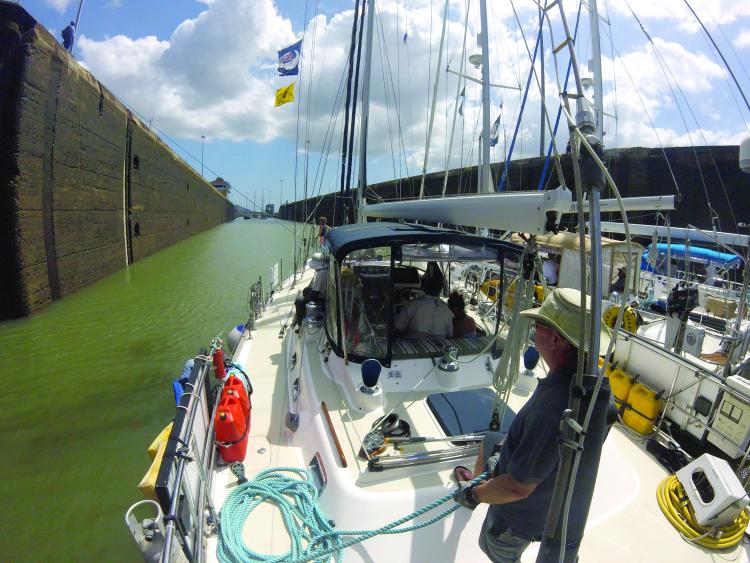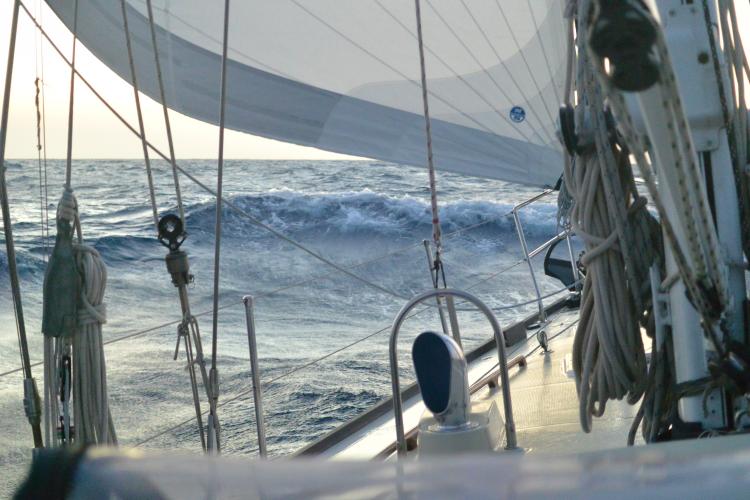Organized Boat, Comfortable Crew
An enjoyable ocean passage takes more than just a seaworthy vessel and a skilled crew. The best bluewater passages begin with an organized skipper, good planning, and a cohesive crew, whose strengths and weaknesses complement one another. Here are six things to consider before your Offshore Passage.
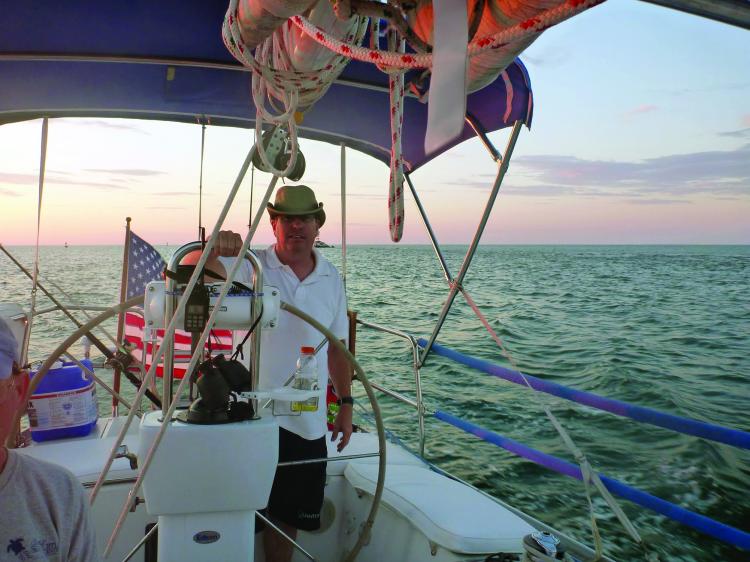
1) Who and how many?
Important factors in choosing crew include boat size, interpersonal compatibility, and skill sets. All contribute to the success, safety, and enjoyment of an offshore passage. A skipper is responsible for ensuring that each watch team is confident steering, navigating, trimming and changing sails, monitoring boat systems and crew health, and responding to emergencies.
“Crew comfort is one of the most important lessons we have learned,” says Bay-based sailor Doug Shapter, who with his wife Caroline Foster has sailed offshore on their own boat as well as crewing for other skippers. “Our experiences have taught us some valuable lessons,” says Caroline, “especially when it comes to keeping everyone aboard safe and comfortable.”
The number of crew needed depends on a variety of factors. Caroline says, “We’ve found that the number of crew onboard can have both positive and negative effects. A large crew, six or more, provides short watch schedules and more free time for everyone to eat, sleep, cook, read, or rest however they like. The negative side to a large crew is the need for larger quantities of food, greater water consumption, and more locker space. For those reasons, many offshore cruisers prefer two to four crew.
“While it's always good to have crew with offshore experience, it's even more critical to make sure everyone gets along well, and can work well as a team,” she adds.
2) Ground rules
Cruising is supposed to be fun. No one wants to feel trapped at sea with “that guy.” Setting the ground rules before leaving shore is a key duty of the boat’s captain. Different captains have different expectations, so be clear about everyone’s responsibilities with regard to stowing personal belongings, cooking, cleaning the galley, wearing safety gear, and drinking alcohol.
For example, what is the expectation, or rule, about when to clip in? Caroline says, “On our J/42 we stay clipped in at all times when offshore. However, when we sailed in the 2018 ARC on the Hylas 54 with a full enclosure, we did not generally clip in during the day; we did on night watch. Everyone should always clip in when going on deck.”
Alcohol consumption while underway is another area where expectations differ by boat, so set expectations upfront. “Drinking alcohol offshore is not recommended for obvious reasons,” says Caroline. “However on the World ARC we noticed differences between American sailors and European or Aussies. The non-Americans tended to be more lax about that rule, having a traditional cocktail before dinner or a glass of wine with the evening meal.”
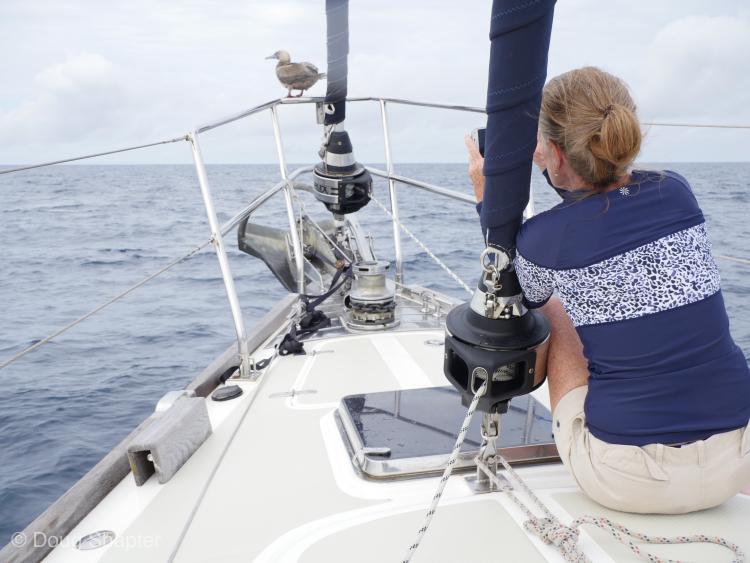
3) Climate Control
“Being out in the elements is exhausting, especially in high seas, rain, and cold. A full enclosure makes for a more comfortable, relaxed crew.”
Doug adds, “Being able to warm the cabin when the temperature falls and providing adequate ventilation when it warms up are ideal. A full enclosure will reduce exposure to the nastiest of elements, but in some situations, you can shield the crew from most of the weather with canvas other than a full enclosure. While a full enclosure is certainly nice to have, especially on longer passages, I wouldn’t say it is critical for coastal cruising. Plus, there is a lot to be said for rolling back the bimini and looking at the stars on a midnight watch!”
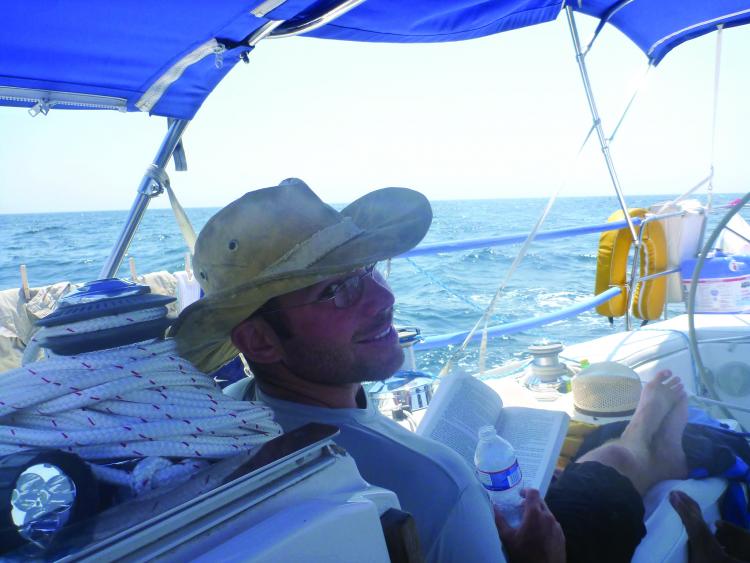
4) Organization
“Crew comfort includes ensuring that the crew have places to stow and organize their gear and keeping the cabin and saloon comfortable and clean,” says Doug.
Caroline adds, “No matter how many crew we have aboard, we like to provide each crew member with his or her own drawer or locker space to keep personal belongings organized.”
Your crew will thank you for providing a convenient place for all to recharge personal electronics, and instead of letting small items such as a knives, keys, flashlights, pens, and the hand-held radio, roll around in the navigation station desk, attach a pocket-style organizer to the interior cabin wall; each item gets its own pocket.
“Combing boxes may not seem important when you’re day sailing.” says Caroline, “but with a large crew on an extended passage, they can really aid in the organization process. Look for a vessel with many, or large, combing boxes and other interior storage compartments. Tons of stuff ends up in them.”
Some skippers assign each crew member a number, and then their gear and storage area is labeled with their corresponding number. A master list is posted for all to see. This helps to keep things neat and promote putting things away in the same spot after each use. Organized skippers also like to post in the cabin watch schedules and boat diagrams that depict the location of stowed safety gear. While you’re busy labelling gear, make labels for important switches too.
5) Night watch
Caroline and Doug usually go with a two-hour watch schedule at night. “Provided that you have enough crew, two people should always be in the cockpit,” says Caroline, “one at the helm and one on backup. After an hour, the backup crew becomes the helmsman, and someone who was resting comes up to be backup. So everyone is on watch for two hours at a time, rotating every hour. This allows the helmsman an opportunity to explain to the backup crew the conditions, the vessels to keep watch on, and any other important information. This rotation of crew seems to work well for us. Some crew like to switch up the schedules, but from my experience, most like to keep the same routine.
“I’ve found that provisioning with night watch snack bags for everyone is a plus. I fill them with nuts, maybe crackers and cheese, and of course chocolate. When I’m on night watch, I always like having a Coke. I also recommend keeping a diary, in addition to the log book. In my experience, night watches are a great place to write down your thoughts of the day.”
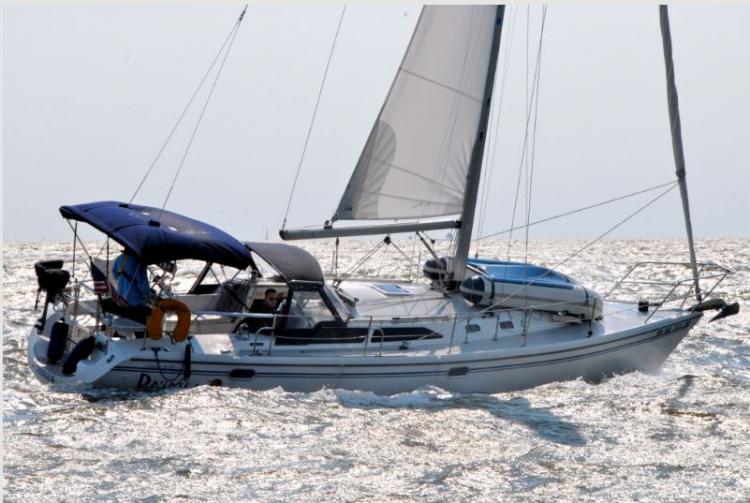
6) Safety gear
Each captain needs to choose how to handle crew safety gear. Some skippers, in the interest of quality control, like to provide safety gear. Others ask you to bring your own. Doug and Caroline’s crew usually bring their own safety gear, but they do have spare inflatable life harnesses if crewmembers need them.
“Our jack line set-up is worth mentioning,” says Doug. “We use custom jacklines made by Annapolis Performance Sailing. The jackline uses high-strength, low-stretch line encased in nylon webbing. The problem with just using nylon webbing is that it stretches and lengthens when wet. The problem with just using line is that it rolls under foot. Combining the two is ideal, and APS will custom make the jacklines to suit your needs. We run two on either side of the cockpit and one on either side of the boat running forward. For those, we deploy two tethers each. The idea here is that crew would have their own tether in the cockpit, but if they had to go forward (usually when something is going awry), they could quickly clip in, clip out of the cockpit tester and move forward, with a minimal of fumbling.”
On the topic of safety, Caroline stresses the importance of attending a Safety at Sea seminar. “I believe in taking all the safety at sea seminars you can and particularly right before your departure. Make sure your crew does, too. Autohelm, a life raft, EPIRB, and everything else that you hear recommended at Safety at Sea are important. A backup of all equipment is ideal. Sometimes the more seasoned a sailor gets, the more complacent and relaxed he can be, possibly cutting corners on safety and being a little riskier. A reminder of the critical hazards of offshore sailing is always a good refresher. I also suggest reading John Kretschmer's ‘Sailing a Serious Ocean’.”
If crew is arriving to the boat with their own gear via airplane, check with the airline prior to bringing CO2 cartridges aboard. “When we crewed on the ARC, we brought our inflatable life vests and harnesses,” says Caroline. “At that time, you could legally bring two CO2 cartridges onboard a plane in stowed luggage.”
By Beth Crabtree
For more articles on offshore sailing click here.
---
About Caroline Foster and Doug Shapter
In addition to sailing their J/42 from Annapolis to Nantucket, Doug and Caroline have crewed on numerous coastal cruises and offshore deliveries between the Chesapeake, Florida, and the Caribbean. However, the most time they spent offshore was crewing for Gary Rubin and his wife, Torie, aboard their Hylas 54 Solitude in the 2018 World ARC. Caroline joined the boat in St. Lucia and sailed to Santa Marta, Columbia, and the San Blas Islands off Panama, then on to Colon, where they picked up Doug and went through the Panama Canal, before sailing to Los Perlas, off the Pacific coast of Panama, and to the Galapagos. Caroline is also an expert on cooking aboard. Find her pro advice at galleypirates.com.
